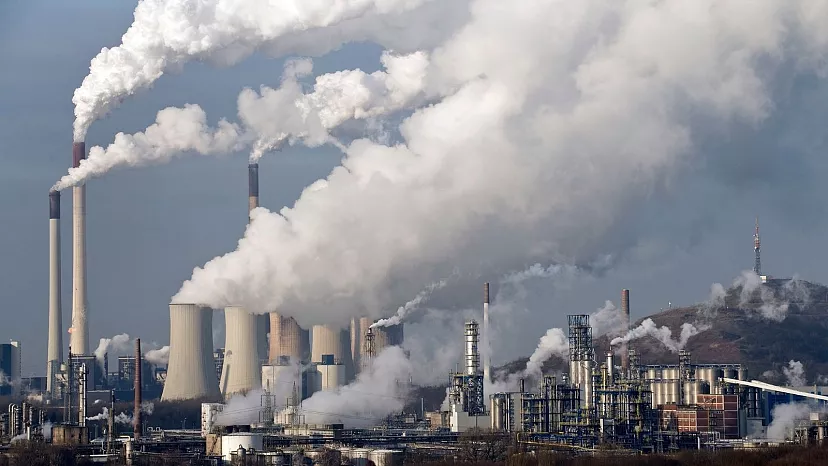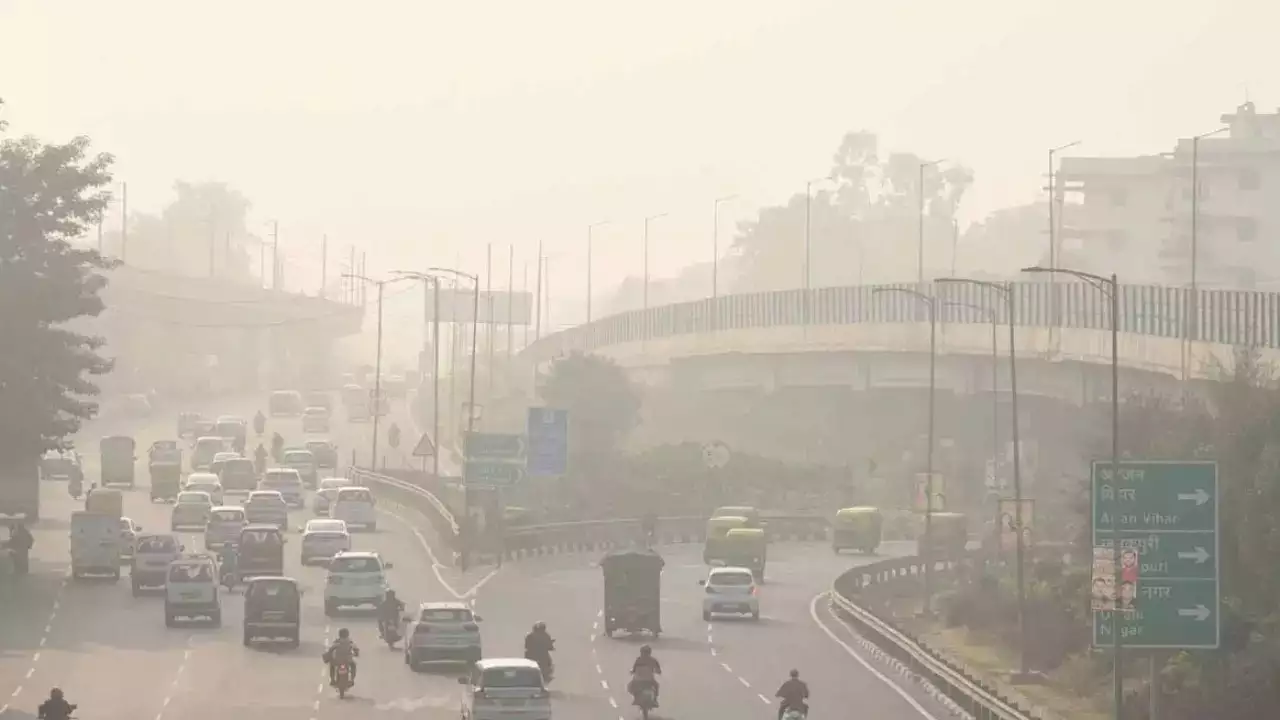KNOW MORE ABOUT AIR POLLUTION

What is air pollution?
Air pollution is a significant environmental issue caused by the release of harmful substances into the atmosphere, often from human activities such as industrial processes, vehicle emissions, and burning fossil fuels. It poses health risks and contributes to climate change, making it crucial to address through sustainable practices and regulations.
What are the major air pollutants?
The major air pollutants include:
1. Particulate Matter (PM): Tiny particles suspended in the air, categorized as PM10 and PM2.5 based on their size.
2. Nitrogen Oxides (NOx): Gases produced by combustion processes, primarily from vehicles and industrial activities.
3. Sulfur Dioxide (SO2): A gas released from burning fossil fuels containing sulfur, like coal and oil.
4. Carbon Monoxide (CO): A colorless, odorless gas produced by incomplete combustion of carbon-containing fuels.
5. Ozone (O3): Ground-level ozone is formed by chemical reactions between oxides of nitrogen (NOx) and volatile organic compounds (VOCs) in the presence of sunlight.
6. Volatile Organic Compounds (VOCs): Organic chemicals that can evaporate into the air and contribute to the formation of ozone and smog.
7. Lead: Although significantly reduced due to regulatory measures, lead can still be a concern, especially in areas with historical industrial activities.
These pollutants can have adverse effects on human health, the environment, and contribute to climate change. Efforts to control and reduce their emissions are crucial for air quality improvement.
Comparing air pollution in the city with rural areas
Cities typically experience higher levels of air pollution compared to rural areas. This is primarily due to the concentration of human activities and sources of pollution in urban environments. Here are some key points of comparison:
Cities:
1. Traffic Emissions: High vehicular traffic in cities leads to increased emissions of pollutants like nitrogen oxides and particulate matter.
2. Industrial Activities: Urban areas often host various industries, contributing to emissions of pollutants such as sulfur dioxide and particulate matter.
3. Construction and Infrastructure: Ongoing construction projects and infrastructure development in cities can release dust and other pollutants.
4. Densely Populated: The concentration of people and activities in cities intensifies pollution sources.
Rural Areas:
1. Less Traffic: Rural areas generally have lower traffic density, reducing emissions from vehicles.
2. Agricultural Practices: While rural areas may have agricultural emissions, they are different from industrial pollution and often involve natural processes.
3. Natural Environment: Rural areas benefit from more green spaces and natural vegetation, which can help absorb pollutants and improve air quality.
4. Lower Population Density: With fewer people and industrial activities, the overall impact on air quality in rural areas is usually lower.
However, it’s essential to note that some rural areas may face unique challenges, such as agricultural pollution or localized sources like biomass burning. Effective strategies for managing air quality require consideration of both urban and rural contexts.
Control of air pollution
Controlling air pollution involves a combination of regulatory measures, technological advancements, and public awareness. Here are key strategies:
1. Regulations and Standards: Implement and enforce strict air quality standards and emission regulations for industries, vehicles, and other pollution sources.
2. Vehicle Emission Controls: Promote and mandate the use of cleaner fuels, catalytic converters, and emission control technologies in vehicles.
3. Industrial Controls: Encourage industries to adopt cleaner production methods, upgrade equipment, and implement technologies that reduce emissions.
4. Renewable Energy Sources: Shift towards renewable energy sources to decrease reliance on fossil fuels, reducing emissions from power generation.
5. Waste Management: Proper waste disposal and recycling can minimize the release of pollutants from landfills and incineration.
6. Afforestation and Green Spaces: Planting trees and creating green spaces helps absorb pollutants and improve overall air quality.
7. Public Transportation: Encourage the use of public transportation, cycling, and walking to reduce the number of vehicles on the road.
8. Awareness and Education: Raise public awareness about the impact of air pollution and promote environmentally friendly behaviors.
9. Research and Monitoring: Invest in research and monitoring systems to track air quality trends, identify sources of pollution, and assess the effectiveness of control measures.
10. International Cooperation: Air pollution often crosses borders, so international collaboration is crucial to address transboundary pollution effectively.
Implementing a combination of these strategies, tailored to the specific challenges of each region, is essential for comprehensive air pollution control.

Prevention against health challenges from air pollution
To prevent health challenges from air pollution, individuals can take several measures to reduce their exposure and minimize associated risks:
1. Stay Informed: Be aware of local air quality levels. Use air quality index reports and forecasts to plan outdoor activities on days with lower pollution levels.
2. Limit Outdoor Activities on Poor Air Quality Days: Reduce time spent outdoors, especially during days when air quality is poor. This is particularly important for vulnerable populations like children, elderly individuals, and those with pre-existing health conditions.
3. Create a Clean Indoor Environment: Use air purifiers to reduce indoor pollutants. Keep windows and doors closed during times of high outdoor pollution.
4. Choose Clean Transportation: Opt for walking, cycling, or using public transportation to minimize personal vehicle emissions. If driving, carpooling and using fuel-efficient vehicles can help reduce pollution.
5. Avoid Tobacco Smoke: Smoking increases indoor air pollution. Quitting smoking or avoiding exposure to secondhand smoke is crucial for respiratory health.
6. Use Protective Masks: In highly polluted environments, especially in urban areas with heavy traffic or during poor air quality events, consider wearing masks designed to filter out pollutants.
7. Create Green Spaces: Support or participate in local initiatives that promote green spaces, tree planting, and urban planning that enhances air quality.
8. Healthy Lifestyle Choices: Maintain a healthy lifestyle through regular exercise, a balanced diet, and staying hydrated. This can strengthen the immune system and mitigate some of the health impacts of pollution.
9. Regular Health Check-ups: Monitor your health regularly, especially if you live in areas with consistently high pollution levels. Seek medical advice if you experience respiratory or other health issues.
10. Advocate for Policy Changes: Support and advocate for policies that address air pollution at local, national, and international levels. Encourage initiatives promoting cleaner industries, renewable energy, and sustainable transportation.
Individual actions, combined with community and policy efforts, contribute to a healthier environment and reduced health risks associated with air pollution.
What is air pollution? Air pollution is a significant environmental issue caused by the release of harmful substances into the atmosphere, often from human activities such as industrial processes, vehicle emissions, and burning fossil fuels. It poses health risks and contributes to climate change, making it crucial to address through sustainable practices and regulations. What…